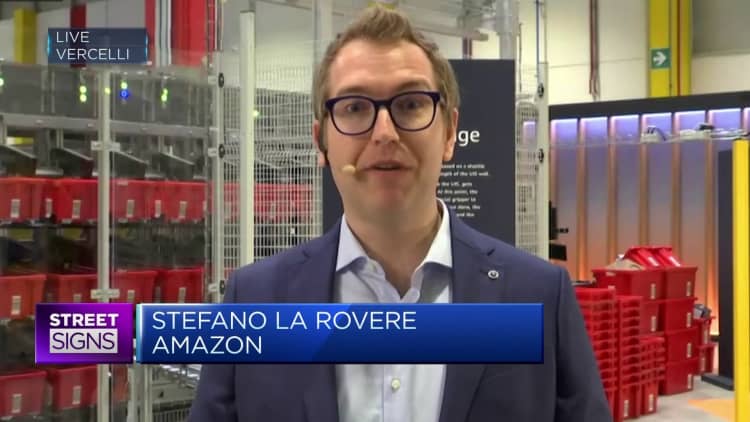
Shenzhen-based LimX Dynamics showed off one of its humanoid robots.
Limx Dynamics
BEIJING — Artificial intelligence like ChatGPT is accelerating research to bring humanoid robots closer to reality in China, home to many of the world’s factories.
Artificial intelligence has been around for decades. The emergence of OpenAI’s ChatGPT chatbot has transformed the ability of artificial intelligence to better understand and generate content in a human-like manner.While U.S. technology has yet to be officially launched in China, local companies such as Baidu Similar chatbot and artificial intelligence models have been released.
Zhang Li, chief operating officer of Shenzhen LimX Dynamics, said that in the field of robotics, the development of generative artificial intelligence can help machines understand and perceive the environment.
About three months after joining the two-year-old startup, Li said he had scaled back his expectations for how long it would take LimX to produce a humanoid robot that can not only work in factories but also provide services in homes. help.
Lee originally expected the entire process to take eight to 10 years, but now expects some use cases to be ready in five to seven years. “After working for a few months, I saw how the capabilities of various tools have been enhanced by artificial intelligence,” he said in Mandarin (translated by CNBC).
“It speeds up our entire development cycle,” he said.

Companies are seizing the opportunity. OpenAI itself is supporting humanoid robots Start-up companywhile Elon Musk’s Tesla is developing its own, called Optimus.
Electric car giant BYD Last year, Shanghai-based Agibot invested in the company just months after it was founded, according to PitchBook.
At a high level, Chinese state media released a photo of Chinese President Xi Jinping in November Watch humanoid robots It was his first time in Shanghai since the outbreak, at the exhibition center.The robot is Developed by Fourier Intelligence.
As LimX eventually envisions, before humanoid robots enter homes, factories could be a lucrative, contained setting in which to deploy them.
According to the latest report from Stanford University, China surpassed Japan in 2013 and became the world’s largest installer of industrial robots, now accounting for more than 50% of the global total. Artificial Intelligence Index Report.
According to the report, electronics, automobiles, and metal machinery are the three leading industries for industrial robot installation in China.
Impact on human work
However, when it comes to completely replacing human workers, advances in artificial intelligence alone won’t be enough.
LimX’s Li said that even if artificial intelligence allows robots to think and make decisions like humans, mechanical limitations are a major reason why humanoid robots cannot replace human workers.
Future Capital, one of LimX’s backers, has also invested in a company called Pan Motor, which specializes in producing motors for humanoid robots.
Eric Xia, partner at Future Capital, an investor in LimX, pointed out that generative AI will not directly help robots move. But “advances in large-scale language models can help humanoid robots perform high-level task planning,” he said in Chinese (translated by CNBC).
Other investors in LimX include Legend Capital.
Once the cost per robot drops, the shift to factory robots will accelerate.
Steve Hoffman, chairman of the Founders Space startup accelerator, said he is working with a Chinese startup called Fastra, which he expects to start mass-producing robots within a year. He said he spent some time in China this year teaching local businesses how to integrate generative artificial intelligence.
“We have already received six orders from research institutions,” he said, noting that the startup aims to reduce the cost of each robot to between $50,000 and $100,000 through launch.
“If we can get to the $50,000 price point, we can sell a lot of robots,” he said, noting that the robot’s battery can be charged while working 24 hours a day. “The cost of the robot can be paid for within a year.”
In drug research, generative AI can reduce costs without cutting back on labor.
“Reducing headcount does not save costs in our business. It actually saves costs by reducing failed experiments,” said Alex Zhavoronkov, chairman, executive director and CEO of Insilico Medicine, New York and other parts of the world.
He noted that big pharmaceutical companies typically spend thousands of dollars to replicate a molecule for testing, and run thousands of such tests per project. He claimed that with the help of artificial intelligence, Insilico only needs to synthesize about 70 molecules per program.
The company published a paper in Nature in March claiming that its drug had entered Phase 2 clinical trials. AI generated drugs.





